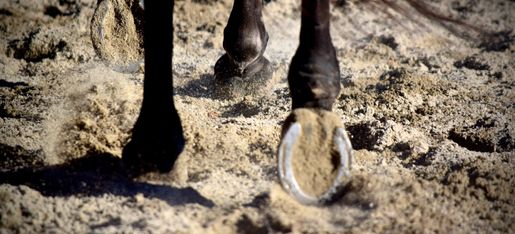Signed in as:
filler@godaddy.com
Signed in as:
filler@godaddy.com
Please reach us at hoofputty@gmail.com if you cannot find an answer to your question.
These additional uses highlight the versatility of hoof putty in addressing various hoof issues beyond the more common conditions like cracks, bruises, and abscesses.
This putty is highly versatile and effective in various applications, particularly in providing support and protection for horse hooves. Here are some specific instances where this putty can be used:
Adding copper sulfate to Cloud 9 silicone putty enhances its functionality in several significant ways, particularly in the treatment and prevention of hoof-related issues. Mixing your own copper sulfate with the putty enables you to adjust the amount precisely to suit the specific needs of each horse. Reasons for incorporating copper sulfate into your silicone putty:
These recommendations are based on the general properties of the Cloud 9 Soft Equine Putty and the typical requirements of each condition. It's always a good idea to consult with a farrier or equine veterinarian for specific advice tailored to an individual horse's needs.
The application frequency of Cloud 9 Soft Equine Putty can vary based on the specific needs of the horse and the particular hoof condition being treated. Generally, it can be applied as needed based on the wear and tear of the putty and the progress of the hoof condition. Here are some guidelines:
It’s important to regularly inspect the hooves and consult with a farrier or veterinarian to determine the best reapplication schedule based on the horse's specific circumstances and response to the treatment.
Yes, you can apply Cloud 9 Soft Equine Putty to the entire bottom of the hoof, especially in cases of thin soles or stone bruising. Applying the putty across the whole hoof surface can provide comprehensive cushioning and protection, helping to alleviate discomfort and promote healing. This method is beneficial in distributing weight evenly and absorbing impact, which is crucial for conditions like thin soles and stone bruises.
Applying the putty correctly under the hoof pad helps in distributing weight evenly and reducing impact shock, which is beneficial for the overall hoof health and comfort of the horse an answer to this item.
Yes, you can use Cloud 9 Soft Equine Putty with your hoof boots. The putty can provide additional cushioning and support, enhancing the protective and therapeutic benefits of the hoof boots. When used together, the putty helps distribute weight evenly and absorb impact, which is beneficial for various hoof conditions and overall hoof health.
Here are some benefits of using Cloud 9 Putty with hoof boots:
Ensure that the putty is applied properly and that the hoof boots fit well without causing additional pressure or discomfort to the horse. Regular checks and adjustments might be necessary to maintain the best fit and effectiveness
The duration for using Cloud 9 Soft Equine Putty varies depending on the specific hoof condition being treated. Here are guidelines for different conditions:
We use cookies to analyze website traffic and optimize your website experience. By accepting our use of cookies, your data will be aggregated with all other user data.

SAVE 40% OFF YOUR ORDER
PROMO CODE: COMFORT40